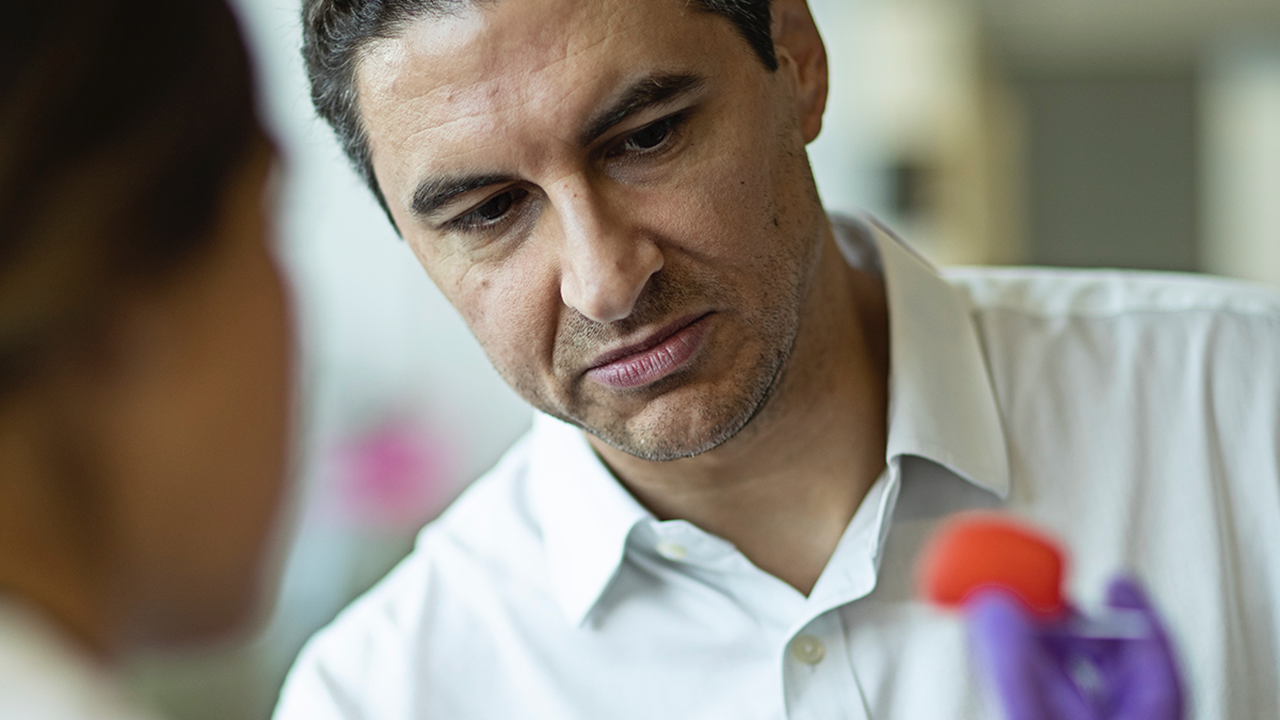
The future of surgery may be summed up with a slight twist on a familiar adage—“practice twice, cut once.”
A team of University of Minnesota researchers has developed a way to 3D print replicas of individual people’s organs, providing a customized model for surgeons to practice on before going into surgery. The research, led by Michael McAlpine, Ph.D., associate professor of mechanical engineering, and his colleagues in the U’s College of Science and Engineering, can help surgeons understand the anatomical and mechanical differences in organs between one person and the next—and that, in turn, could lead to fewer surgical errors and potentially save lives.
McAlpine and his team have started with replicas of the prostate gland. Using a mix of custom-developed, silicone-based inks, the team “tuned” their replicas to match the anatomy, mechanical properties, and tactile feel of real prostates, which they gathered information on using MRI scans and tissue samples. The team then equipped their replicas with 3D-printed sensors to help surgeons gauge how real organs would respond during the procedure.
“Electrical sensors give quantifiable feedback, so surgeons can see a number that represents the pressure they’re applying,” McAlpine said. “They can tell how much is too much and ease back before getting there.”
Going forward, the researchers hope to print 3D models of more complicated and individualized organs, such as those with a cancer growth or a deformity, to allow surgeons to experiment with different approaches.
Printing New Organs for Transplant
In a related line of work, McAlpine and his team recently succeeded in 3D printing light receptors on a domed surface—an important step toward fashioning a bionic eye for the seeing-impaired.
“If we could replicate the function of these tissues and organs, we might someday even be able to create bionic organs for transplants,” he said.
The eye isn’t the only transplant project in progress. McAlpine and his colleagues are also developing a 3D-printed “bridge” that reconnects neurons in the spinal cord that have been separated from injury. The bridge, made of silicone fibers and stem cells that develop into neurons, could bring relief to patients suffering pain or loss of function. McAlpine’s collaborators include Ann Parr, MD, Ph.D., assistant professor in the Medical School’s Department of Neurosurgery and Stem Cell Institute, and James Dutton, Ph.D., research assistant professor of genetics, cell biology, and development in the College of Biological Sciences and the Stem Cell Institute.
“There’s a perception that people with spinal cord injuries will only be happy if they can walk again,” Parr said. “In reality, most want simple things like bladder control or to be able to stop uncontrollable movements of their legs. These simple improvements in function could greatly improve their lives.”